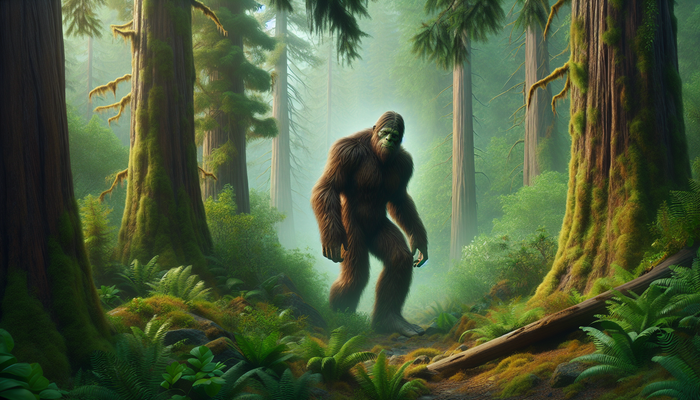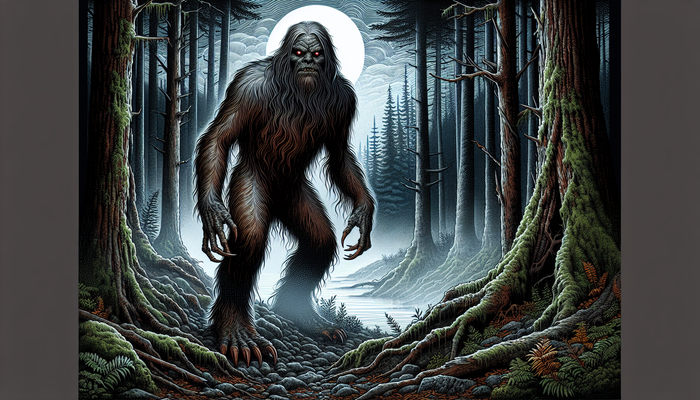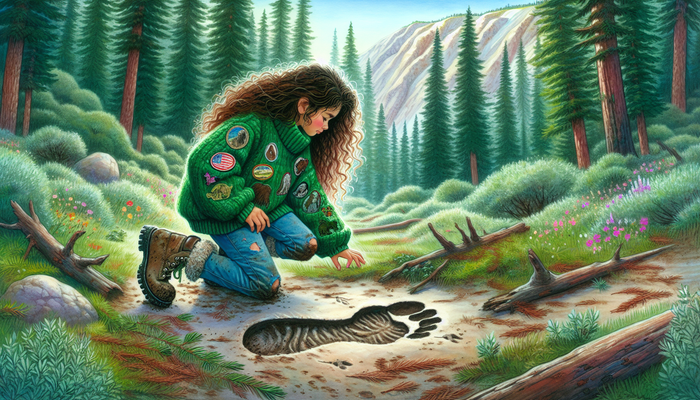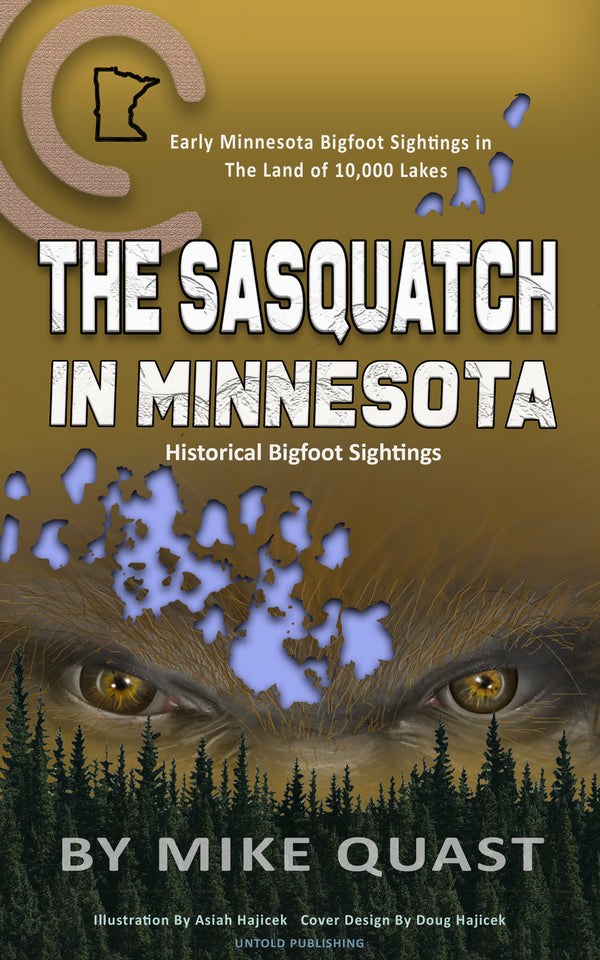Montana's Elusive Sasquatch Sightings
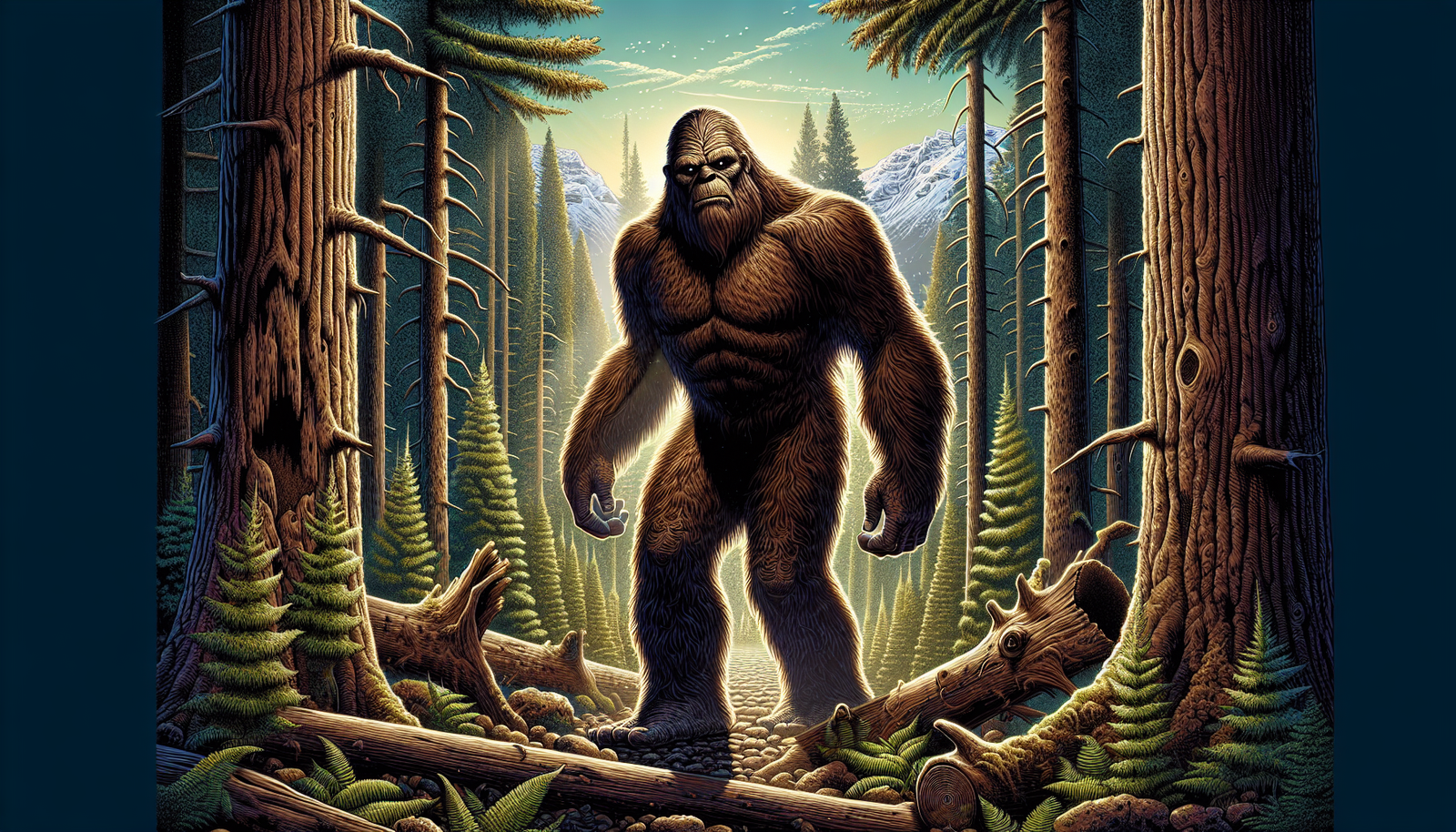
By Ava Martinez, Cryptozoologist
The legend of Bigfoot, also known as Sasquatch, has captivated the imaginations of people around the world for decades. This elusive, ape-like creature is said to roam the dense forests and rugged wilderness areas of North America, leaving behind tantalizing clues in the form of footprints, hair samples, and eyewitness accounts. While Bigfoot sightings have been reported in nearly every state, there is one place that stands out as a particular hotspot for Sasquatch activity: the vast and untamed landscape of Montana.
As a cryptozoologist and biology teacher with a deep fascination for the mysteries of the natural world, I have long been intrigued by the persistent reports of Bigfoot sightings in Montana. This state, with its sprawling wilderness areas, dense forests, and low human population density, seems to provide the perfect habitat for a creature as elusive and enigmatic as the Sasquatch. In this article, I will delve into the rich history of Bigfoot encounters in Montana, examining the evidence, analyzing the patterns, and attempting to shed light on one of the most enduring mysteries of our time.
Montana: A Bigfoot Hotspot
Montana's reputation as a Bigfoot hotspot is well-deserved. According to the Bigfoot Field Researchers Organization (BFRO), a leading group dedicated to the study of Sasquatch, Montana ranks 5th in the nation for reported Bigfoot sightings, with over 50 documented incidents. This is particularly impressive considering Montana's relatively low human population compared to other states.
So what makes Montana such an attractive location for Bigfoot? The answer lies in the state's unique geography and ecology. Montana boasts vast swathes of untouched wilderness, including dense forests, rugged mountains, and sprawling valleys. These habitats provide ample cover and resources for a large, nomadic creature like Bigfoot to thrive. Additionally, the low human population density means that there are fewer opportunities for human-Bigfoot encounters, allowing the creatures to maintain their elusive nature.
Bigfoot sightings in Montana are not confined to any one particular region; rather, they are distributed across the state, with concentrations in certain counties. This widespread distribution suggests that Bigfoot is not just a localized phenomenon, but a creature that is well-adapted to the diverse landscapes of Montana.
The Hotspots: A County-by-County Breakdown
While Bigfoot sightings have been reported throughout Montana, there are certain counties that stand out as particular hotspots for Sasquatch activity. By examining these counties in detail, we can begin to paint a picture of the patterns and characteristics of Montana's Bigfoot population.
Missoula County: The Epicenter of Montana Bigfoot Activity
Missoula County, located in western Montana, is the undisputed epicenter of Bigfoot activity in the state. With 17 reported sightings, it has the highest concentration of Bigfoot encounters in Montana. These sightings span decades and come from a variety of witnesses, including biologists, hunters, and everyday citizens.
One of the most notable incidents in Missoula County occurred in 2006, when a biologist reported seeing a large, upright creature walking across a ridge. The witness, who was conducting research in the area, described the creature as being distinctly different from a bear or any other known animal. Another intriguing sighting took place in 2012, when a Massachusetts veterinarian and her family spotted a dark, bipedal figure on a ridge near the Waterworks Trail. The family managed to capture a photograph of the creature before it disappeared into the forest.
Flathead County: Glacier National Park and Beyond
Flathead County, home to the iconic Glacier National Park, is another major hotspot for Bigfoot activity in Montana. With 13 reported sightings, it has the second-highest concentration of Bigfoot encounters in the state. The dense forests and rugged terrain of Glacier National Park provide an ideal habitat for a creature like Bigfoot, and many of the sightings in Flathead County have occurred in or near the park boundaries.
One of the most intriguing Flathead County sightings took place in 2007, when a hunter reported seeing a 7-foot tall, bipedal creature with a "crippled foot" near the Flathead Indian Reservation. The witness described the creature as walking awkwardly, as if one of its feet was injured or deformed. This detail adds an interesting layer to the Bigfoot mystery, suggesting that these creatures may be susceptible to injuries and physical abnormalities just like any other animal.
Gallatin County: The Bozeman Area
Gallatin County, which includes the city of Bozeman and the surrounding areas, has had 10 reported Bigfoot sightings over the years. Many of these sightings have occurred in the rugged wilderness areas surrounding Bozeman, including the Gallatin National Forest and the Bridger Mountains.
One of the most dramatic Gallatin County sightings took place in 1993, when a group of backpackers had a terrifying encounter with a large, bipedal creature during a fierce storm in the Gallatin Divide. The witnesses described hearing strange howls and seeing a massive, dark figure running through the brush, even as the storm raged around them. This sighting highlights the elusiveness of Bigfoot and its ability to navigate even the harshest of conditions.
Lewis and Clark County: The Helena Region
Lewis and Clark County, which encompasses the state capital of Helena and the surrounding areas, has had 8 reported Bigfoot sightings. Many of these sightings have occurred in the remote wilderness areas near Helena, including the Big Belt Mountains and the Gates of the Mountains Wilderness.
One of the most recent and compelling Lewis and Clark County sightings took place in 2015, when a retired Special Forces member encountered an all-black, bipedal creature walking down a private road between Helena and Great Falls. The witness, who was driving at the time, described the creature as being around 8 feet tall and walking with a strange, lumbering gait. This sighting, coming from a trained military observer, adds significant credibility to the Bigfoot phenomenon in Montana.
Other Notable Hotspots
While Missoula, Flathead, Gallatin, and Lewis and Clark counties have the highest concentrations of Bigfoot sightings in Montana, there are several other counties that have had notable encounters over the years. These include:
- Glacier County, where a 14-year-old hunter and his cousins had a terrifying encounter with a tall, hairy creature in 1982
- Granite County, where a prospector had his vehicle dented by a rock seemingly thrown by an unseen creature in 2010
- Park County, where a driver and his passenger spotted a large, reddish-brown creature walking upright near the Bridger Mountains in 1999
- Ravalli County, where a truck driver and his wife had a clear sighting of a Bigfoot sprinting across Highway 93 in 2005
These sightings, spread across the diverse landscapes of Montana, paint a picture of a widespread and adaptable creature that is able to thrive in a variety of habitats. From the dense forests of the west to the rolling prairies of the east, Bigfoot seems to have found a home in the Treasure State.The Characteristics of Montana's Bigfoot
As we examine the numerous Bigfoot sightings reported across Montana, certain patterns and characteristics begin to emerge. These details, gleaned from eyewitness accounts and physical evidence, provide valuable insights into the nature and behavior of this elusive creature.
Unique Gait and Movement Patterns
One of the most striking and consistent details reported by Bigfoot witnesses in Montana is the creature's unique gait and movement patterns. Many observers describe the Sasquatch as having an "unnatural" or "awkward" way of walking, as if it is not entirely comfortable with bipedal locomotion. This odd gait has led some researchers to speculate that Bigfoot may be a transitional species, caught somewhere between a quadrupedal primate and a fully upright hominid.
For example, the retired Special Forces member who encountered a Bigfoot in Lewis and Clark County in 2015 noted that the creature walked with a strange, lumbering gait, distinct from that of a human or any known animal. Similarly, the hunter who spotted a Bigfoot with a "crippled foot" in Flathead County in 2007 described the creature as moving awkwardly, as if it was struggling to maintain its balance.
These consistent reports of an unusual gait suggest that Bigfoot may have a unique anatomical structure, perhaps with longer arms and shorter legs than a human, which could account for its somewhat clumsy appearance when walking upright. This adaptation may be a result of the creature's primarily forested habitat, where a more flexible and agile body plan would be advantageous for navigating through dense vegetation and over rough terrain.
Impressive Size and Stature
Another consistent characteristic reported by Bigfoot witnesses in Montana is the creature's impressive size and stature. Eyewitness estimates of Bigfoot's height range from 7 to 10 feet tall, with most sightings describing a creature that towers over the average human. In addition to its height, Bigfoot is often reported to have a muscular, powerful build, with broad shoulders and a barrel-shaped chest.
The sheer size of Bigfoot is one of the most compelling pieces of evidence for its existence, as it is difficult to imagine a human hoaxer being able to convincingly mimic such an imposing figure. The consistency of size estimates across multiple sightings, often by experienced outdoorsmen and women who are familiar with the relative sizes of bears and other large animals, lends credibility to the idea that Bigfoot is a real, biological entity.
The impressive stature of Bigfoot may be an adaptation to its forested environment, where a larger body size would provide advantages in terms of thermoregulation, intimidation of potential predators, and the ability to traverse rugged terrain. It is also possible that Bigfoot's size is a result of sexual dimorphism, with males being significantly larger than females, as is the case with many primate species.
Behavioral Traits
In addition to its physical characteristics, Bigfoot is also reported to exhibit certain behavioral traits that set it apart from other animals. One of the most notable of these traits is its elusiveness and nomadic nature. Despite the relatively high number of sightings in Montana, Bigfoot remains a highly elusive creature, rarely leaving behind definitive evidence of its presence.
This elusiveness may be a result of Bigfoot's intelligence and awareness of human activity. Many witnesses report that the creature seems to intentionally avoid human contact, quickly retreating into the forest when it senses the presence of people. This behavior suggests that Bigfoot may have a highly developed sense of self-preservation, perhaps as a result of centuries of human encroachment on its habitat.
Another behavioral trait that has been reported in some Montana Bigfoot sightings is nocturnal activity. While sightings have occurred at all times of day, there are a number of reports that describe Bigfoot being active at night, perhaps using the cover of darkness to move more freely through the forest and avoid detection by humans.
This nocturnal behavior may be an adaptation to avoid predation by other large animals, such as bears or mountain lions, which are primarily active during the day. It may also be a way for Bigfoot to take advantage of the cooler nighttime temperatures, which would be especially important for a creature with such a large body size and high metabolic needs.
The Native American Connection
One of the most fascinating aspects of the Bigfoot phenomenon in Montana is its deep connection to the state's Native American heritage. Many of Montana's indigenous tribes have long-standing legends and beliefs surrounding Bigfoot-like creatures, which they often refer to by different names, such as "Sasquatch" or "Chiye-tanka" (which means "big elder brother" in the Lakota language).
Longstanding Legends and Beliefs Among Montana Tribes
The Salish and Kootenai tribes, who inhabit the Flathead Indian Reservation in western Montana, have a particularly rich tradition of Bigfoot stories. According to some tribal elders, Bigfoot-like creatures have been known to visit the reservation's camps and villages, often peering into windows and causing mischief. These stories have been passed down through generations, and many tribal members consider Bigfoot to be a very real and present part of their cultural landscape.
Similarly, the Blackfeet and Crow tribes, who inhabit the eastern and southern parts of Montana, respectively, have their own Bigfoot legends. The Blackfeet refer to the creature as "Soksi-mita," which means "black bear man," and believe that it has the power to shape-shift and disappear at will. The Crow, on the other hand, call Bigfoot "Batsi-witse," which translates to "hairy man," and consider it to be a powerful and sometimes dangerous being.
The Spiritual and Paranormal Aspects
In addition to the physical descriptions of Bigfoot, many Native American legends also ascribe spiritual or paranormal qualities to the creature. Some tribes believe that Bigfoot is not just a flesh-and-blood animal, but a supernatural being that exists on a different plane of reality, crossing over into our world only occasionally.
This belief is exemplified by the story of the Fort Peck Reservation incident in 1984, where a tribal member and his friends had a terrifying encounter with a Sasquatch while hunting. According to the witness, he had been advised by tribal elders to stand his ground and face the creature if he ever encountered one, as a way of showing respect and courage. However, when confronted with the reality of the situation, the witness and his friends were overcome with fear and fled the area.
This incident highlights the deep cultural and spiritual significance that Bigfoot holds for many Native American tribes in Montana. Rather than simply being a curiosity or a subject of fascination, Bigfoot is often seen as a powerful and sacred being, one that demands respect and caution from those who encounter it.
The Cultural Significance of Bigfoot in Montana
The prevalence of Bigfoot legends and beliefs among Montana's Native American tribes underscores the creature's deep cultural significance in the state. For many indigenous people, Bigfoot is not just a myth or a legend, but a very real and present part of their cultural heritage and identity.
This cultural connection has led some researchers and advocates to argue for the protection of Bigfoot as a cultural resource, similar to sacred sites or traditional hunting grounds. They argue that the creature's habitat should be preserved not just for its ecological value, but also for its cultural and spiritual significance to Native American communities.
Furthermore, the Native American connection to Bigfoot highlights the importance of traditional ecological knowledge in understanding and studying the creature. By drawing on the wisdom and experiences of indigenous people who have lived alongside Bigfoot for generations, researchers may be able to gain new insights into the creature's behavior, habitat preferences, and cultural significance.
From Bigfoot to UFOs: Hangar 1 Publishing Has You Covered!
Explore Untold Stories: Venture into the world of UFOs, cryptids, Bigfoot, and beyond. Every story is a journey into the extraordinary.
Immersive Book Technology: Experience real videos, sights, and sounds within our books. Its not just reading; its an adventure.




